
News |
- North American Leadership On Reducing Emmissions
- Lake Winnipeg Hearings Schedule Released
- COP 20 Agreement Weak - Next Paris 2015
- Whiteshell Park Borders Expanded
- Canada's National Energy Board - No Credibility
- Canada: Second Worst Environmental Performance - Germanwatch
- COP 20 Moving Beyond Climate Talks
- When Will Manitoba Ban Fracking?
- Canada Failing To Protect Wildlife
- COP 20 Presses for Climate Agreement
- Quebec And Ontario Energy East Standards
- IEA: Fossil Fuel $550 Billion Subsidy Hampers Renewables
| North American Leadership On Reducing Emmissions | 19 December 14 |

Ontario, together with California, Quebec and British Columbia, have issued a joint statement, demonstrating leadership and collective action on climate change. The four regions were in Lima, Peru, for the annual United Nations conference on climate change, COP 20 The Joint Statement on Climate Change, announced by respective environment and climate change ministers:
The statement builds on the leadership and collaboration shown by Ontario and Quebec through the climate change Memorandum of Understanding signed by both provinces in November 2014. The agreement commits both provinces to collaborate on a range of measures, including exploring market-based approaches to reducing carbon emissions and fostering a strong, green economy in central Canada.
View December 9, 2014 Electric Light & Power article |
|
 Print version Print version |
Top |
| Lake Winnipeg Hearings Schedule Released | 19 December 14 |
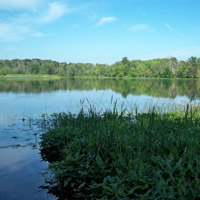
Participants can register until end of January. Steps to apply for participant funding are outlined on the CEC website. The process to file formal written Information Requests for Manitoba Hydro is underway. There is no public registry for this review due to it not being held under the Environment Act. Hearings in Winnipeg start March 9. In January and February the CEC will be holding hearings in several locations in Manitoba. They will also be visiting First Nations who have invited the CEC to hold a hearing in their community. Detailed schedule is posted on the CEC website. Manitoba Wildlands is a participant in the Lake Winnipeg Regulation hearings, with similar activities and mandate as during the Wuskwatim, Bipole III, and Keeyask CEC hearings.
View Lake Winnipeg Hearings Schedule |
|
 Print version Print version |
Top |
| COP 20 Agreement Weak - Next Paris 2015 | 19 December 14 |

Included in the text coming out of Lima is a goal of phasing out carbon emissions by mid-century, which was supported by over 100 countries. That this made it out of the COP 20 in Lima is significant. The only way to achieve this scenario is by moving away from fossil fuels - this pits the UNFCCC process directly against the fossil fuel industry. The Lima Accord is different from other negotiations, because for the first time all nations agreed to cut carbon emissions. Each country is going to report how they will make this happen. However a big problem with the language means that participating nations will not be held accountable for reporting their plans – it’s as if each country “will be marking their own homework ahead of the critical Paris meeting.” Elizabeth May was the only Canadian opposition elected representative attending COP 20 in Lima, Peru.
View 350.org article |
|
 Print version Print version |
Top |
| Whiteshell Park Borders Expanded | 19 December 14 |

In addition to the increased area, the province is increasing the protected areas within the park by 20,375 hectares - roughly six times the size of Birds Hill Provincial Park. This will bring the percentage of protected area within the park up to 44 from 35 percent. Unfortunately the two regulations required under the Parks Act, and the Mines Act, were not available as of Friday, December 19, 2014. “We will monitor this announcement to see wether newer land use zones are regulations are put in place,” commented Gaile Whelan-Enns, Manitoba Wildlands Director.
View December 16, 2014 Wilderness Committee article |
|
 Print version Print version |
Top |
| Canada's National Energy Board - No Credibility | 12 December 14 |
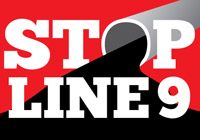
Most recently, Louisette uncovered an internal e-mail, from the National Energy Board (NEB), through an Access To Information Request, that appears to boast about new Harper Conservative government rules that reduce the public's ability to ask questions at pipeline hearings. In the report attached to the memo, the NEB's Hearing Manager for Oil Pipeline Applications told colleagues about the "successes" of a recently concluded Line 9A pipeline hearing in the summer of 2012. The manager states that the public's inability to cross-examine witnesses at the hearing was one of several achievements. The e-mail was written three weeks after the Harper government omnibus bill C-38 became law. Bill C-38 puts new limits on NEB hearings. Conservative Minister Joe Oliver said at the time that the reforms were necessary to halt "environmental and other radical groups" from hijacking pipeline reviews. The new bill and the new limits on the NEB demonstrate a complete disconnect from due process and public participation. If the NEB is seeking to limit public participation - the same public whose best interests it is supposed to be safeguarding then it is obviously operating without any credibility.
View December 9, 2014 Vancouver Observer article |
|
 Print version Print version |
Top |
| Canada: Second Worst Environmental Performance - Germanwatch | 12 December 14 |
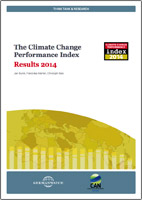
Global emissions have reached a new peak, but recent developments indicate a new readiness for action on climate protection. This is the message of the 10th edition of the Climate Change Performance Index (CCPI); a ranking of the climate protection performance of the 58 highest emitters worldwide published by Germanwatch and Climate Action Network (CAN) Europe at the UN Climate Conference in Lima. "We see global trends, indicating promising shifts in some of the most relevant sectors for climate protection", says Jan Burck (Germanwatch), author of the Index. "The rise of emissions has slowed down, and renewables are rapidly growing due to declining costs and massive investments." Canada is only outdone in poor performance by Australia. Making it one of the countries lacking the most action on climate change. Polls across Canada show a majority of Canadians are worried about the impact of climate change on future generations, and more than half support a carbon tax. Clear evidence of the gap between the people of Canada and the current Canadian government.
View Germanwatch The Climate Change Performance Index 2014 |
|
 Print version Print version |
Top |
| COP 20 Moving Beyond Climate Talks | 12 December 14 |

With the Harper government obviously, and perhaps quite deliberately, falling far behind on its commitment to cut emissions and combat climate change, we should not be surprised by the scepticism of other nations at Canada’s presence at COP 20. Canada openly committed to $300 million in support of developing countries working to cut emissions – with no clear mandate at home. At one time this sort of practice would have been called ‘simony’ – back in the day when you could pay the Catholic Church of Rome a certain amount of money to have your sins forgiven. Now it is just called politics. The rhetoric from Canada’s Prime Minister’s Office (PMO) is always about how Canada is very interested in forging alliances with it’s fellow compatriots in this battle against climate change. The Harper government is demonstrating hot not to act, and how not to talk and how not to engage in the practice of leadership when it comes to climate change. The current government of Canada is not a representation of the feelings of the peoples of Canada when it comes to climate change. The climate talks currently going on in Lima, Peru have within them great seeds of potential for global action to finally begin to happen. While a binding agreement will not be the final result of the COP 20, the road to Paris 2015 can be paved with the actions of those engaged and committed as leaders to acting on climate change for future generations. The global awareness of climate change has reached a tipping point. Acting, with or without a global agreement is required. Waiting is not an option any more.
View December 12, 2014 Peru this Week, Living in Peru article |
|
 Print version Print version |
Top |
| When Will Manitoba Ban Fracking? | 5 December 14 |
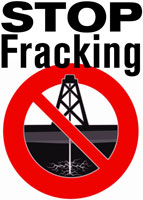
The use of hydraulic fracturing, or fracking, in which often-dangerous chemicals are mixed with large quantities of water (or other base fluid) and sand and injected into wells at extremely high pressure is an ever expanding problem. Unconventional development of oil and gas resources, using advanced fracking methods poses threats to water, air, land, and the health of communities. US studies have shown dangerous levels of toxic air pollution near fracking sites; Oil and gas extraction have caused smog in rural areas at levels worse than downtown Los Angeles. Oil and gas production have been linked to increased risk of cancer and birth defects in neighbouring areas; as well as to increased seismic activity and earthquakes. To get more oil and gas out of the ground the techniques being used crack and break up bedrock that also protects underground water sources such as acquifers and the rivers and lakes above ground. With so many rivers and lakes in Manitoba – can any government of Manitoba consider it sane to allow fracking when there is so much potential risk for such short term financial gain? When will the Manitoba government show leadership and require environmental assessment before any hydraulic fracturing in Manitoba?
View December 5, 2014 The Guardian article |
|
 Print version Print version |
Top |
| Canada Failing To Protect Wildlife | 5 December 14 |

A new report and assessment of species at risk in Canada has been published. Protecting and promoting recovery of species at risk of extinction is a critical component of biodiversity conservation. In Canada, the Committee on the Status of Endangered Wildlife in Canada (COSEWIC) determines whether species are at risk of extinction or extirpation, and has conducted these assessments since 1977. COSEWIC assessments to identify whether at-risk species have been assessed more than once tended to improve, remain constant, or deteriorate in status, as a way of assessing the effectiveness of biodiversity conservation in Canada; 369 species met criteria for examination, 115 deteriorated, 202 remained unchanged, and 52 improved in status. Only 20 species (5.4%) improved to the point where they were 'not at risk', and five of those were due to increased sampling efforts rather than an increase in population size. Species outcomes were also dependent on the severity of their initial assessment; for example, 47% of species that were initially listed as special concern deteriorated between assessments. After receiving an at-risk assessment by COSEWIC, a species is considered for listing under the federal Species at Risk Act (SARA), which is the primary national tool that mandates protection for at-risk species. The Minister of Environment Leona Aglukkaq decides whether or not to list the species under the Species at Risk Act. It is designed to respect "the protection of wildlife species at risk in Canada," according to the Act. "The government can choose not to list the species even if it needs listing," says Favaro. "That decision takes into account how expensive it would be to protect them."
View December 1, 2014 CNW article |
|
 Print version Print version |
Top |
| COP 20 Presses for Climate Agreement | 5 December 14 |

International political response to climate change began with the adoption of the United nations Framework Convention on Climate Change (UNFCCC) in 1992, which sets out a framework for action aimed at stabilising atmospheric concentrations of greenhouse gases (GHGs) to avoid “dangerous anthropogenic interference with the climate system.” The Convention, which entered into force on 21 March 1994, now has 195 parties. The importance of this Lima, Peru event lies not only in the progress of international agreements, but also in the public's interest and power to give a voice to key stakeholders including scientists and communities that are vulnerable to the impacts of climate change. Behind each negotiation protocol signed once a year, there is an ongoing effort on the part of researchers, NGOs, the private sector, local governments and communities to integrate climate adaptation and mitigation in the fabric of people's everyday lives. Technology transfer, balancing the need for international actions and locally appropriate interventions, and designing effective adaptation programmes are among the practical issues key to negotiating and enforcing international treaties. Success in Lima will depend in part on Peru's Environment Minister Manuel Pulgar-Vidal. As official president of COP 20, Pulgar-Vidal's determination and energy will be crucial, most observers believe. Climate change is a major issue in Peru, since Lima and many other parts of the country are dependent on freshwater from the Andes glaciers. Studies show they have lost 30 to 50 per cent of their ice in 30 years and many will soon be gone.
View December 3, 2014 Huffington Post article |
|
 Print version Print version |
Top |
| Quebec And Ontario Energy East Standards | 24 November 14 |
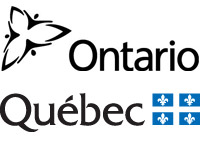
Quebec Environment Minister David Heurtel laid out a series of conditions TransCanada must meet before the provincial government accepts the Quebec portion of the company’s massive Energy East pipeline project.
Ontario is expected soon to present its own list of criteria for approving the pipeline, says Keith Stewart, an Ontario climate campaigner with Greenpeace. “Ontario and Quebec in particular have been saying that any kind of a national energy strategy has to include climate change and that is something the federal government just doesn't want to hear,” he said.
View November 24, 2014 The Council of Canadians article |
|
 Print version Print version |
Top |
| IEA: Fossil Fuel $550 Billion Subsidy Hampers Renewables | 24 November 14 |

The new IEA report; World Energy Outlook 2014, puts Fossil-fuel subsidies at $550 billion in 2013 – more than four-times those to renewable energy – and are holding back investment in efficiency and renewables. In the Middle East, nearly 2 million barrels a day of crude oil and oil products are used to generate electricity when, in the absence of subsidies, the main renewable energy technologies would be competitive with oil-fired power plants. More than half of the world’s fossil-fuel subsidies go to oil, and many of the subsidies are concentrated in oil- and gas-producing countries in the Middle East and North Africa. The subsidies that go to fossil fuels dwarf the subsidies for renewable energies, which the IEA put at $120 billion in 2013. The U.S. had about $27 billion in renewable subsidies in 2013, mostly going to solar PV, wind and biofuels. The International Energy Agency (IEA), an autonomous agency, was established in November 1974. Its primary mandate was – and is – two-fold: to promote energy security amongst its member countries and provide authoritative research and analysis on ways to ensure reliable, affordable and clean energy for its 29 member countries and beyond.
View November 17, 2014 Energy Matters blog post |
|
 Print version Print version |
Top |


 RSS Feeds:
RSS Feeds: